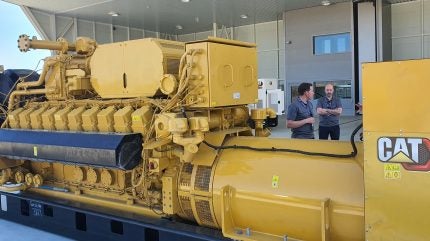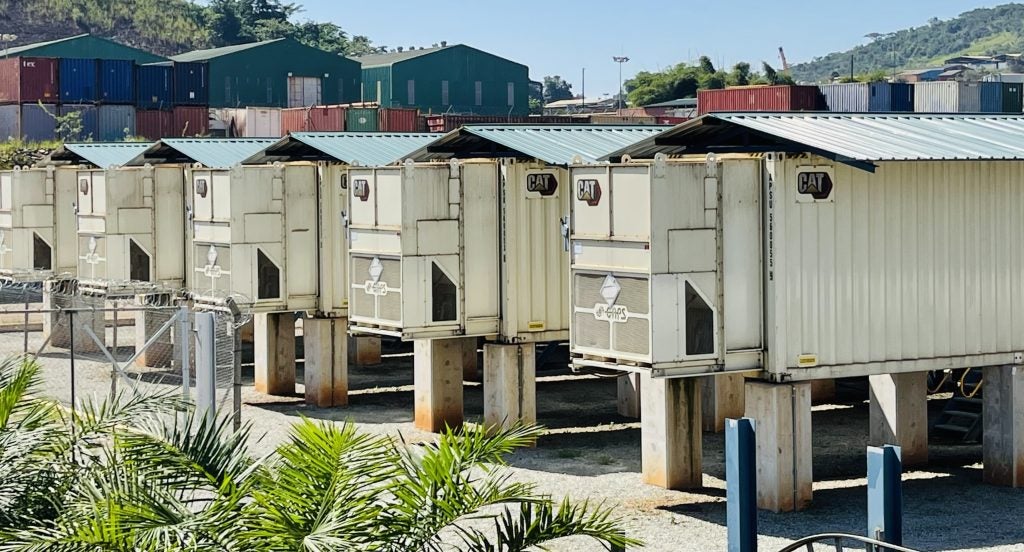
On a recent site visit to Caterpillar Electric Power’s Malaga Demonstration & Learning Centre, Power Technology caught up with design engineer Holly Gregory to discuss how the construction, mining and engineering giant is developing its power offerings through a move into the energy storage space.
Ed Pearcey (EP): Speaking generally, what are the biggest challenges facing energy storage technologies?

Discover B2B Marketing That Performs
Combine business intelligence and editorial excellence to reach engaged professionals across 36 leading media platforms.
Holly Gregory (HG): One of the biggest challenges in the energy storage space is the rapid pace of development in battery systems. Battery cells continue to become more energy dense, improving energy storage footprint, while costs have been rapidly declining, reducing capital expenditure.
At the same time, their cycle lives have improved. Keeping up with the pace of improvements in battery technologies is critical to providing best-fit energy storage solutions for customers.
EP: How does Caterpillar deal with the maintenance difficulties associated with remote energy storage?
HG: Caterpillar has experience with servicing and maintaining products remotely, whether that be generator sets, machines or energy storage assets. We are committed to servicing and supporting our energy storage products globally.

US Tariffs are shifting - will you react or anticipate?
Don’t let policy changes catch you off guard. Stay proactive with real-time data and expert analysis.
By GlobalDataCaterpillar currently has more than 1.4 million connected assets all over the world. This remote connectivity enhances product uptime and enables timely support for maintenance needs.
Additionally, Caterpillar’s global dealer network has trained technicians to support maintenance efforts locally as needed to support our customers.
EP: In terms of local energy storage, are batteries the best method to use? Is there currently a viable alternative method?
HG: As of today, batteries have been the prominent method for enabling local energy storage from both power and capacity installed – and they are forecasted to be the leading technology for the foreseeable future.
With that in mind, however, Caterpillar is constantly monitoring and evaluating the energy storage product landscape and new technologies to be able to grow and adapt.
EP: Are Caterpillar’s remote energy solutions always seen as an ‘off grid’ backup, or could they develop into something bigger (for example, to feed into a national power grid)?
HG: Caterpillar’s designs for energy storage offer flexibility in various applications, whether off-grid or grid-tied.
A combination of products including energy storage, generator sets and renewables can be used to generate power to substitute for the grid supply, support the grid supply as required or act as a bridge-to-grid solution where power is delivered until a connection to the grid can be made.
Our inverters provide transitions from grid-following to grid-forming to support customer loads and work autonomously. They can also be integrated with our Cat Energy Control Solutions to deliver site control that provides greater reliability and improved efficiencies for customers.

EP: Does remote energy storage work best when there are at least two power sources (such as solar and diesel) feeding in?
HG: We evaluate each project on a case-by-case basis to select the best solution for that customer.
Some applications may require energy storage and generators sets, others may demand energy storage-plus-PV [photovolatic], while others may require just energy storage with utility support. Many factors influence these decisions, such as costs, emissions and space claims, to name a few.
EP: Given the recent events in Spain, will localised energy storage and production become more popular (possibly moving into the residential space)?
HG: The global demand for power is continuing to grow and we do not anticipate that trend to decline any time soon. Behind-the-meter applications used for distributed/localised power generation are no exception.






